Resources
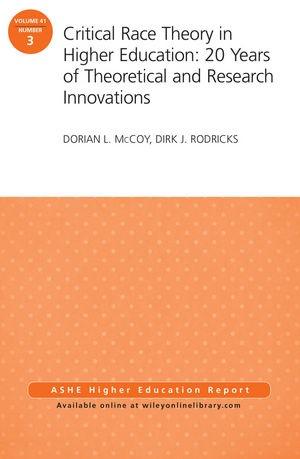
Critical Race Theory in Higher Education: 20 Years of Theoretical and Research Innovations is an in-depth description and analysis of critical race theory. The book addresses contemporary issues facing our society in general and higher education specifically. Dorian L. McCoy, a professor at the University of Tennessee and Dirk. J. Rodricks, a doctoral student at the University of Toronto collaborated on the book. It is part of the Higher Education Report periodical series. It is interesting that this book was launched during some disturbing times involving race in the United States. The book addresses critical race theory at the time when the slogan “Black Lives Matter” becomes the rallying cry against injustice and the attacks on black lives by the criminal justice system and police specifically. Although the book addresses this issue, it is not what propelled the authors to write it. The authors define critical race theory (CRT) as: "A form of oppositional scholarship that centers race and racism while challenging the Eurocentric values established as the accepted norm in the United States; is used to examine the unequal and unjust distribution of power and resources politically, economically, racially, and socially; a movement of scholars committed to challenging and disrupting racism and other forms of oppression; composed of the following key tenets: the permanence of racism, experiential knowledge, interest convergence theory, intersectionality, whiteness of property, the critique of liberalism, and commitment to social justice." (91) Throughout the book the authors take their definition of critical race theory and present research on each aspect of it. This not only serves to educate students in higher education, but also to enlighten those who are part of the hiring process. As one who has served on search committees at institutions of higher education, I find the research in this book to be very stimulating. The documented disproportionate number of professors of color teaching in institutions of higher education makes this research very helpful for search committees in these institutions. Astute people will use this information to further promote equality and even the playing ground in institutions of higher education. Critical Race Theory in Higher Education serves as an educational tool for administrators, board of trustee members, and faculty in higher education, especially for the ways by which it encourages deeper reflection on the subject. The weakness from this reviewer’s viewpoint is that the book becomes somewhat overwhelming with so many references. This sometimes causes the flow of reading to be cumbersome particularly when reading some technical terms. That said, McCoy and Rodricks have put together a large corpus of research on critical race theory that could be helpful to faculty teaching in North American contexts. The book is very timely as it explores a very important subject to address in our present time of heightened awareness of multiculturalism and pluralism. Overall this book is a valuable resource for all who have an interest in higher education.
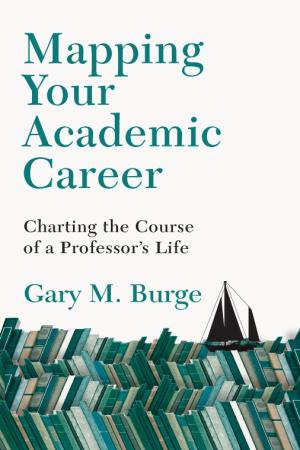
If one were to ask faculty to describe the developmental continuum of an academic career, the responses would probably be structured along the titles that correspond to the faculty ranks of assistant professor, associate professor, and professor. In Mapping Your Academic Career, Gary Burge takes a different approach, examining how faculty careers are shaped by developmental shifts that occur naturally across an adult lifespan. His central thesis is that the development of most faculty proceeds along predictable trajectories that are related, yet not necessarily identical, to their rank. Burge identifies three stages of development in a faculty career, which he labels as “cohorts.” These do not necessarily correspond to faculty rank or age. Instead, they are shaped by: (1) a scholar’s perception of themselves, their career, and their relationship to their institution; and (2) the institution’s perception of the scholar’s career progress and value within the institution. Consistent with other lifespan developmental theories, each cohort is characterized by a central developmental task or question, which influences the choices they make and the forms of support they need. For cohort one, which corresponds to the early phase of an academic career (or possibly a shift to a new institution for experienced faculty), the central task is finding security and vocational identity, with tenure or a long-term contract being the watershed. The central task in cohort two, the midcareer period, is success – that is, achieving mastery and developing a unique voice in one’s teaching and scholarship. For cohort three, who are typically senior, tenured, full professors, it is finding significance – determining their value to the institution and the guild. As a newly tenured faculty member, I approached this book under the assumption that it would focus, at least in part, upon mapping the path to tenure and promotion; that it would discuss the institutional commitments and guild activities that would most likely gain the approval of promotion committees, provosts, and president. Burge’s text, however, is not primarily concerned with how to get to each phase. He spends virtually no time discussing how to get a tenure-track position, how to get tenure, or how to map your path to professor. Instead, he is concerned with the health and vitality of faculty careers and how faculty can successfully navigate the tasks of finding security, success, and significance. Burge devotes a full chapter to each of the three cohorts, describing the individual, interpersonal, and institutional characteristics that predict successful navigation of the stage. He also notes that there are “predictable pitfalls” within each cohort, which may negatively impact, and in some cases end, a scholar’s career. Burge’s text is most helpful for mid-career and senior faculty, as well as for the administrators who oversee them. Because of the prominent role and impact of tenure, faculty development efforts inordinately focus upon it. There is little attention upon helping tenured faculty intentionally reflect upon their vocation, including their commitments to teaching, scholarship, and service within their institutions and the larger society. Burge’s text draws attention to the ways in which faculty evolve as they mature. He provides some insight into the issues that contribute to faculty members’ loss of focus or motivation following tenure or promotion. A significant shortcoming of the book is that it lacks a sound basis of support. Burge provides no description of the methodology used to identify the cohorts. There is no interview data and little support from extant literature to support many of his assumptions. His analysis relies heavily upon personal experience and anecdotes, which he often interprets in troubling ways. While he tries to include issues of race, ethnicity, and culture, his handling of those issues is sometimes clumsy and shortsighted. He does not question or critique institutional structures or systems that hamper the success and vitality of female and ethnic minorities. He treats these issues instead as individual problems that are the responsibility of ethnic minority and female faculty members to navigate. Still, Mapping Your Academic Career is a worthy effort and a helpful book that faculty and administrators should read. In it, Burge names what is often unnamed in faculty development. And while the book has little in the way of firm support, it provides a good foundation for research on the developmental shifts and challenges facing faculty across their careers
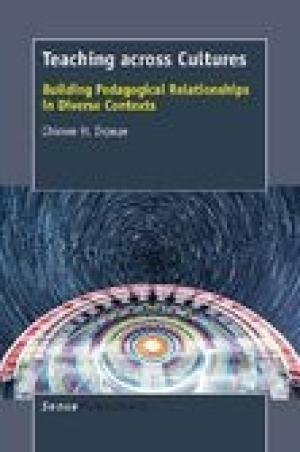
The ability to teach across cultures is more important than ever and many professors are searching for practical resources to help navigate the complexities of twenty-first century classrooms that are both face-to-face and online. Ikpeze’s Teaching across Cultures offers practical tools and it provides the theory behind the approaches he outlines although at times, he leaves the reader wanting more detail on how to incorporate his strategies in the classroom. Ikpeze trains teachers in pedagogy for a cross-cultural context, and emphasizes that all classrooms are multicultural. Through his own experiences as a teacher, he identifies the gaps and missteps that occur in a multicultural classroom and how to address these problems primarily with two approaches: Cultural Responsive Pedagogy (CRP) and the cultivation of “Third Space” in classrooms and online environments. Ikpeze shares freely the classroom problems he encounters as a self-disclosed foreign born (of African descent) and accented English speaker. His openness is refreshing and invites the reader to connect their own teaching challenges with his. CRP demands a responsive teaching style that invites students to bring their wisdom and cultural selves to learning. The creation of third spaces brings together opposing viewpoints into a space where they are questioned and blended. It is an ambiguous space that moves out of binary modes of thinking and learning to a mode of hybridity. The first step Ikpeze covers is the concept of a self-study. Self-study involves intensive data gathering that moves beyond the troublesome student course surveys that often perpetuates race, gender, and class biases to a mode of gathering data from a variety of sources to construct a picture of a teacher’s self-presentation, reception of this presentation, and pedagogy. It is not a one-time process. Ikpeze emphasizes the need for maintaining academic rigor and teaching objectives while addressing the problems discovered in the self-study. The second step in his work emphasizes building relationships between student and teacher, between students and their selves, and between students to allow greater understanding. This work allows the creation of a “third space” where students’ knowledge from day to day living is invited into conversation with academic knowledge. This technique requires intentional exercises and regular engagement with students both in and outside the classroom. Teaching across Cultures is theory heavy and at times frustrates the practitioner who wants to move directly to the practical strategies. While Ikpeze emphasizes relationship building as the foundation for cross-cultural pedagogy, the realities of class size and teaching load shapes the ability of professors to effectively employ many of these tools.
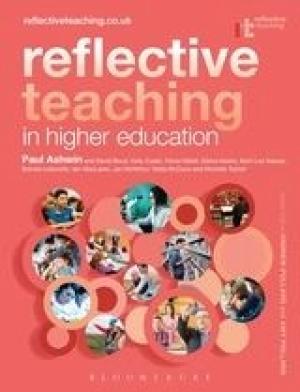
A group of English, Scottish, Irish, and Australian scholars has produced a thorough and insightful resource for effective teaching in higher education that seeks “to bring together the latest knowledge and understanding of teaching, learning, and assessment in higher education” (xi). The editorial team developed the approach to reflective teaching on the basis of the ten point Teaching and Learning Research Programme (TLRP) developed in the UK. The chapters in each section refer to the relevant principles in TLRP and put forward credible arguments grounded in recent empirical research. The editors intersperse useful reflective activities and case studies throughout each chapter in order to promote reflective inquiry by individuals and groups of teachers. The editors organized the book into five parts: Becoming Reflective; Creating Conditions for Learning; Teaching for Understanding; Reflecting on Consequences; and Deepening Understanding. Taken together, these five elements constitute a model for the development of effective teaching in higher education that is comprehensive, open-ended, and ongoing. The approach offered here functions like a dynamic spiral toward adaptive expertise. The emphases on evidence-based theory and practice, constructivism, teaching as jazz improvisation, assessment as a crucial component of learning, and robust inclusion all recommend this book to contemporary educators in higher education. I find only two deficiencies in this impressive body of work. At four hundred pages, only the most dedicated teachers or administrators in higher education will read the work as a whole. I tried to plow my way through to the end several times, but could only make limited progress in any one session of reading due to the density of the material. I think a book half the size of the existing volume would have sufficed. The second problem concerns the commitment of the authors to critical pedagogy. Toward the end of the book, the editors advocate ever more strongly for a largely Frierian-based approach to diversity and inclusion as the best – perhaps the only – way forward in higher education today. While I have more than a passing interest in critical pedagogy, I find the narrowing of the philosophy of education bandwidth advocated here to be overly confining and surprisingly uncritical. I would have liked to see a treatment of multiple approaches that would support the establishment of egalitarian and inclusive communities of learning in higher education. I see four likely uses for this book. Those charged with leading doctoral seminars on teaching in higher education may find this a particularly valuable resource. I know that I will. It could well serve as a viable alternative to Barbara Gross Davis’s Tools for Teaching (2nd ed., Jossey-Bass, 2009). This book could also help new professors develop the kind of reflective practice that will enable them to become expert practitioners of the craft of teaching. Many individual chapters of the book could find use by those leading in-service faculty development sessions. Finally, academic deans or committees responsible for promoting effective teaching in faculties could profitably work their way through this resource in its entirety as a way to gain a 360° sense of effective teaching and learning in higher education today.
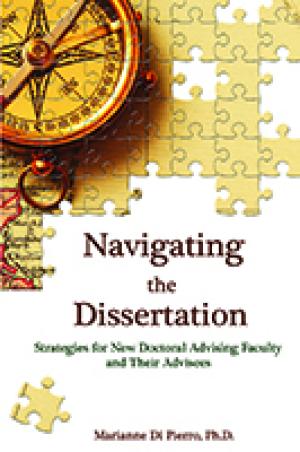
The high attrition rate of doctoral candidates remains a major problem for higher education in the United States. Drawing upon her experience as the manager of graduate research and retention at Western Michigan University, Di Pierro offers an engaging text aimed at new faculty who are advising candidates and their advisees. Di Pierro argues that “despite abundant research and often-echoed affirmations that something must be done to quell doctoral attrition, progress is essentially hampered by a reluctance to recognize that advising faculty cannot continue to work with doctoral advisees by replicating models that are passé” (1). She believes that faculty and candidates need to be aware that models have changed “and are moving in the direction of collaborative, integrative, and interdisciplinary styles” (10). Furthermore, faculty need formal advising training before directing dissertations or serving on committees. Di Pierro makes dissertation committee work a reoccurring subject throughout this book. She begins by addressing communication within committees and with the advisee. She covers expectations, roles, duties, expertise, and responsibilities not by offering a model but by outlining the areas the advisor needs to establish to ensure healthy and helpful communication on the committees. She also explores topics such as vetting a committee by the candidate, dealing with toxic committees, and considerations for faculty members to consider before accepting a role on a committee. Another major subject of Di Pierro’s work is the actual writing of the dissertation. She explores subjects including finding a dissertation topic, the role of literature reviews, concept papers, maintaining draft files, combating the writing blues, responding to plagiarism, and working with human subject review boards. Building on the theme of communication, some of Di Pierro’s strongest chapters cover expectations for editing both from the perspectives of the advisors and the advisee. She explains line-by-line editing versus conceptual editing, explores using technology to give editorial feedback, and engages the problem of when editorial feedback is not working. In her final chapters, Di Pierro offers a number of ideas including developing a “Student’s Bill of Rights” and a “Dissertation Advisor’s Bill of Rights” (173-174) and dealing with the post-dissertation blues. In her closing, she presents her views on the future of doctoral education by calling for the establishment of dissertation wellness checks and envisioning the creation of Graduate Centers for Scholarship, where candidates will find writing experts, statisticians, qualitative and quantitative methodological experts, and digital technology experts all in one place. Di Pierro’s work is very reader-friendly with take-away lists, end-of-chapter biographies, and checklists, but the overall organization of the chapters seems out-of-sync. The author jumps around quickly from topic to topic and back again frequently. That said, the content of the chapters is valuable for its intended audience. Chapter 25, which provides an outline of each chapter, is a useful tool for navigating the book itself. For schools of theology and seminaries, dissertation completion and dissertation quality are important subjects for both PhD and Doctor of Ministry programs. With limited resources for faulty training, Di Pierro’s book offers a valuable discussion starter for faculty and administrators and could serve as a planning tool for overhauling program handbooks. This title is strongly recommended for academic libraries with PhD and Doctor of Ministry programs, veteran faculty who want to improve their advising for candidates, as well as the book’s target audience of new doctoral advising faculty and their graduate students.
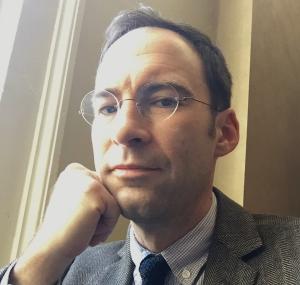
Caleb Elfenbein Assistant Professor Grinnell College Some time back, I wrote a blog post called “Teaching Islam and gender: why we need to set an ethical agenda for the classroom.” It described how, working collaboratively, my class on Islam, gender, and sexuality drew on the work of Lila Abu-Lughod to..

Cláudio Carvalhaes Associate Professor McCormick Theological Seminary It was my first semester teaching. I was anxious and fearful. I was trying to know what to do, while pretending I knew everything. In my second or third class, as I was saying something critical of the US in relationship to 9/11
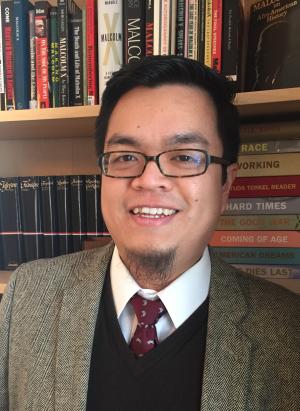
Martin Nguyen Associate Professor, Faculty Chair for Diversity Fairfield University In the teaching of Islam, there are many ways through which we can engage our students in the classroom. My intention here is to share one assignment that I have developed over the years that has proven to be incredibly.
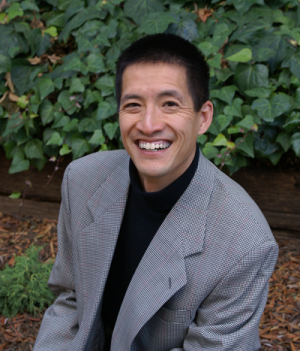
Tat-siong Benny Liew Class of 1956 Professor in New Testament Studies College of the Holy Cross Five years ago, Yale law professor Amy Chua published a controversial book, Battle Hymn of the Tiger Mother. According to Chua, there is a basic difference in parenting practices between those of Asian (particularly.
Wabash Center Staff Contact
Sarah Farmer, Ph.D
Associate Director
Wabash Center
farmers@wabash.edu